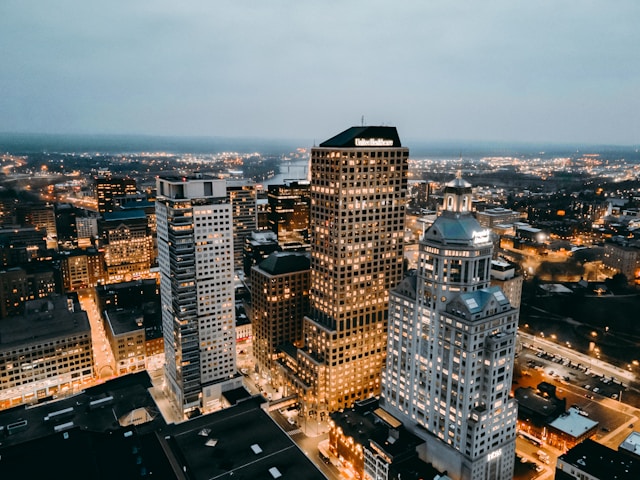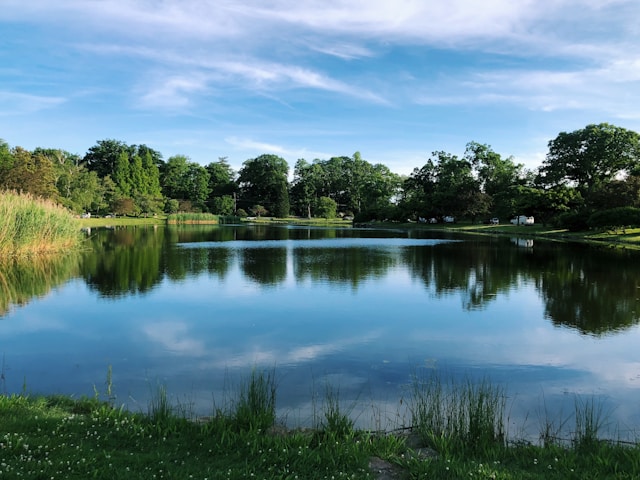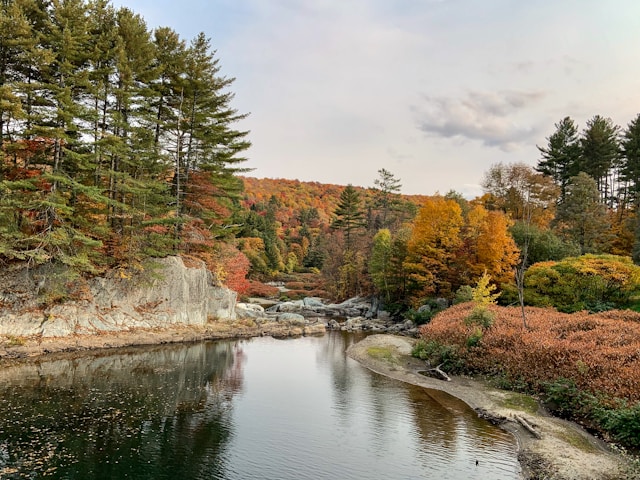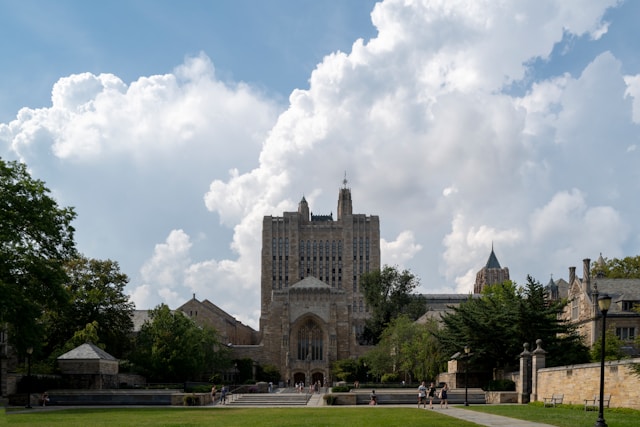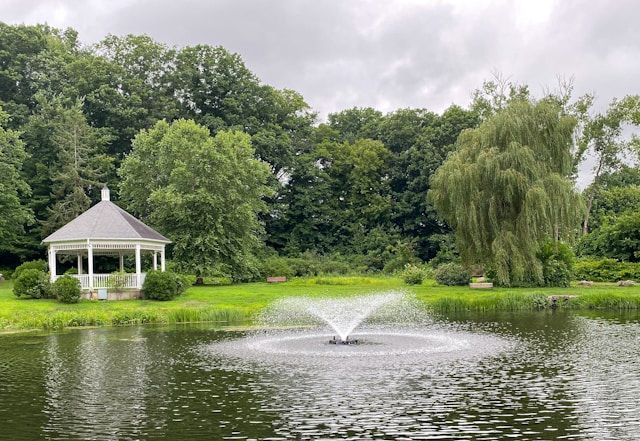Essex, Connecticut, nestled along the picturesque Connecticut River, carries a name that arrived surprisingly late in its history. Before 1820, the area was known as Potapaug Point (or Potapoug Quarter), serving as part of the larger Saybrook settlement. The name “Essex” was first officially applied in 1820 when this riverfront community became the Essex Borough of Saybrook, though it wouldn’t become its own independent town until 1852.
The charming New England town bears little connection to its English namesake, unlike many early Colonial settlements. Essex’s identity evolved through significant transitions – from Native American territory to colonial outpost, to shipbuilding hub, to the distinct Connecticut community we know today. This waterfront gem holds the unusual distinction of being one of the few American towns ever attacked by a foreign power, suffering devastating losses during a British raid in 1814 when the area was still called Potapaug Point.
Get a discount of 15% to 70% on accommodation in Connecticut! Look for deals here:
Connecticut Hotels, Apartments, B&Bs
Walking through Essex today, visitors experience living New England history where colonial architecture meets maritime tradition. The town’s evolution from Saybrook borough to independent municipality reflects Connecticut’s shifting boundaries and identities throughout the colonial and early American periods. The villages of Ivoryton and Centerbrook joined Essex in 1859, creating the complete community that continues to charm residents and visitors alike.
Historical Context and Early Settlement
The rich history of Essex, Connecticut began long before it became an official town in the mid-19th century. This area’s development was shaped by colonial influences, strategic river location, and industrious settlers who established distinct villages.
Hartford and New London County Influence
Essex’s early development was significantly influenced by its position between Hartford and New London counties. Originally part of the Saybrook Colony, the area was not initially included in the Colony of Connecticut.
The region that would become Essex was designated as “Potapaug Quarter” in 1648 by an English surveying committee, making it formally part of Saybrook. This designation came shortly after the territory joined Connecticut Colony in the mid-1640s.
Colonial administrators from Hartford oversaw the broader governance while New London provided important trade connections. The Connecticut River served as the primary transportation route, creating a natural connection between these centers of power.
Origins of the Name Essex
Essex received its official name in 1854, two years after separating from Saybrook and becoming an independent town. The name draws inspiration from Essex County in England, reflecting the English heritage of many settlers.
Before becoming Essex, the area was known by its Native American name “Potapaug,” meaning “at the bay or cove.” This designation appeared in early colonial records and maps.
The transition from Potapaug to Essex represents the cultural shift as English influence solidified in the region. The name choice honored ancestral connections while establishing a distinct identity for the new town.
Development of Centerbrook, Ivoryton, and Essex Village
Essex is composed of three distinct villages, each with its own developmental history. Essex Village emerged first, with settlement beginning around 1664 along the Connecticut River, becoming a shipbuilding and maritime trade center.
Centerbrook developed as an inland community with early water-powered industries. Its position along small streams provided ideal conditions for mills and manufacturing establishments.
Ivoryton, the youngest of the villages, grew around the ivory processing industry in the 19th century. The Comstock, Cheney & Company ivory factory transformed this area into a company town with distinctive architecture and cultural identity.
These three villages officially united in 1859, creating the complete town of Essex as it exists today.
Role of Congregational Church
The Congregational Church played a central role in Essex’s early development, serving as both spiritual guide and community organizer. The first meetinghouse was established in the early 18th century, becoming the center of community life.
Church leaders influenced local governance, education, and social norms. Town meetings often took place in the church building, blending civic and religious affairs.
The physical presence of the church helped establish the town center, with other important buildings and businesses locating nearby. This pattern of development followed the traditional New England model.
The congregation maintained records of births, deaths, and marriages, serving as the town’s earliest historical archive. These documents provide crucial insights into Essex’s early population and social structures.
Cultural and Economic Development
Essex’s rich history is deeply intertwined with its economic activities and cultural institutions that shaped the town’s identity. The Connecticut River provided both transportation and livelihood for early settlers while later industries brought prosperity and growth.
Maritime Activities and the Connecticut River Museum
The Connecticut River played a crucial role in Essex’s development as a maritime center. Shipbuilding emerged as a primary industry in the 18th and 19th centuries, establishing Essex’s reputation for crafting high-quality vessels. The town’s shipyards produced over 500 ships, including fishing schooners, coastal traders, and even warships.
Today, the Connecticut River Museum preserves this nautical heritage. Located on the waterfront in a historic warehouse building, the museum showcases exhibits on shipbuilding techniques, maritime trade, and river ecology.
Visitors can explore artifacts from the town’s seafaring past, view meticulously crafted ship models, and even take seasonal river cruises aboard the museum’s vessels. The museum hosts popular annual events like the Holiday Train Show and the Burning of the Ships commemoration.
War of 1812 Impact on Essex
Essex faced a devastating attack during the War of 1812 that significantly altered its trajectory. On April 8, 1814, British forces raided the town in what became known as the “Burning of the Fleet.”
British marines destroyed 28 vessels in the harbor and damaged numerous buildings, causing financial losses estimated at $200,000 (equivalent to millions today). This British invasion represents one of the most significant attacks on American soil during the war.
The raid severely impacted Essex’s shipbuilding industry and maritime economy. Many shipbuilders faced financial ruin, forcing the community to diversify its economic activities. This pivotal moment pushed the town to develop new industries beyond maritime pursuits.
The event remains commemorated through historical markers, museum exhibits, and annual remembrances that keep this important chapter of Essex’s history alive.
Ivory and Quarry Industry
Following the maritime industry decline, Essex diversified economically with quarrying and ivory processing emerging as vital new sectors. The Ivoryton section of Essex became home to one of America’s largest ivory processing facilities in the late 19th century.
Comstock, Cheney & Company (later Pratt, Read & Company) imported elephant tusks to manufacture piano keys, billiard balls, and various decorative items. This industry transformed the area, bringing jobs, wealth, and architectural development.
The quarry industry simultaneously flourished, with Essex’s distinctive granite extracted for construction projects throughout the region. These quarries provided building materials for numerous structures, including bridges and government buildings.
Both industries left lasting legacies through institutions like the Ivoryton Library and distinctive architecture. The economic center shifted to Ivoryton during this period, reshaping settlement patterns and community development throughout Essex.
Get a discount of 15% to 70% on accommodation in Connecticut! Look for deals here:
Connecticut Hotels, Apartments, B&Bs


